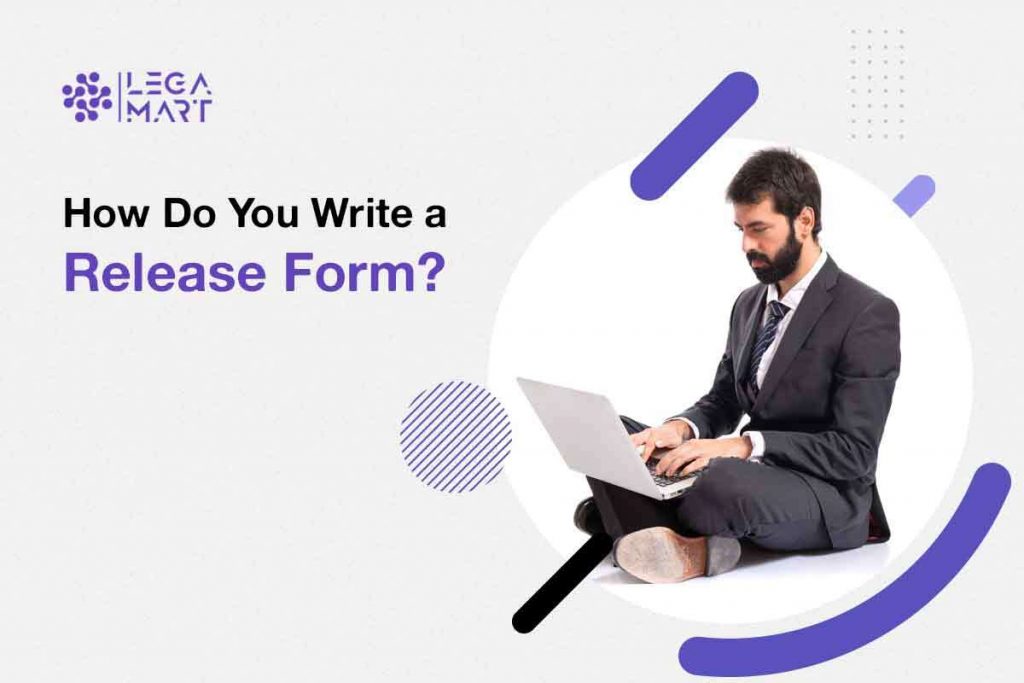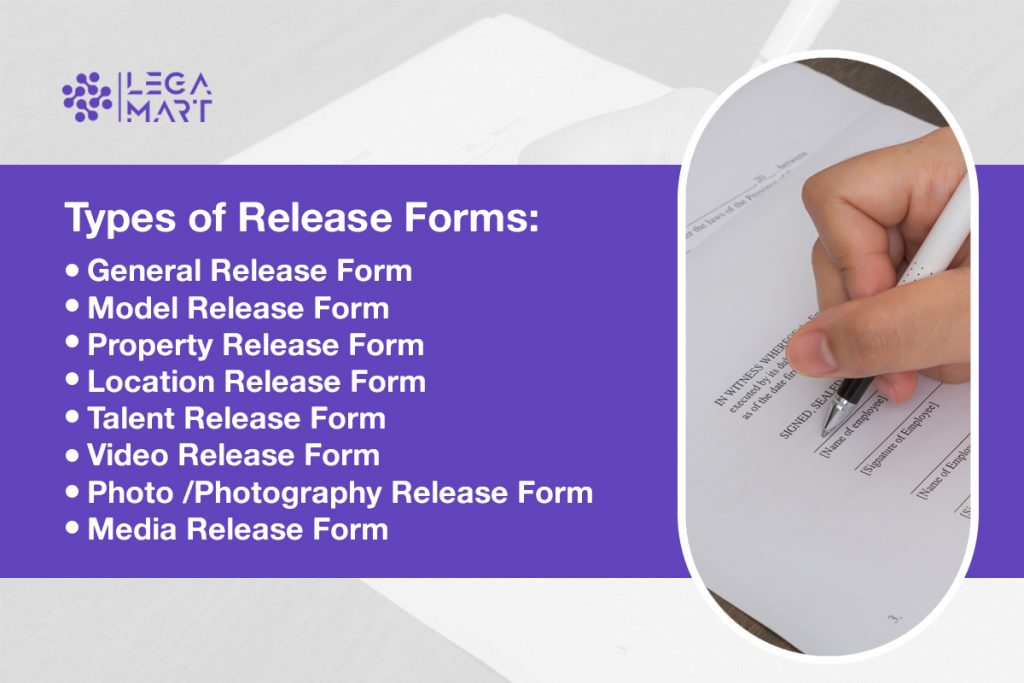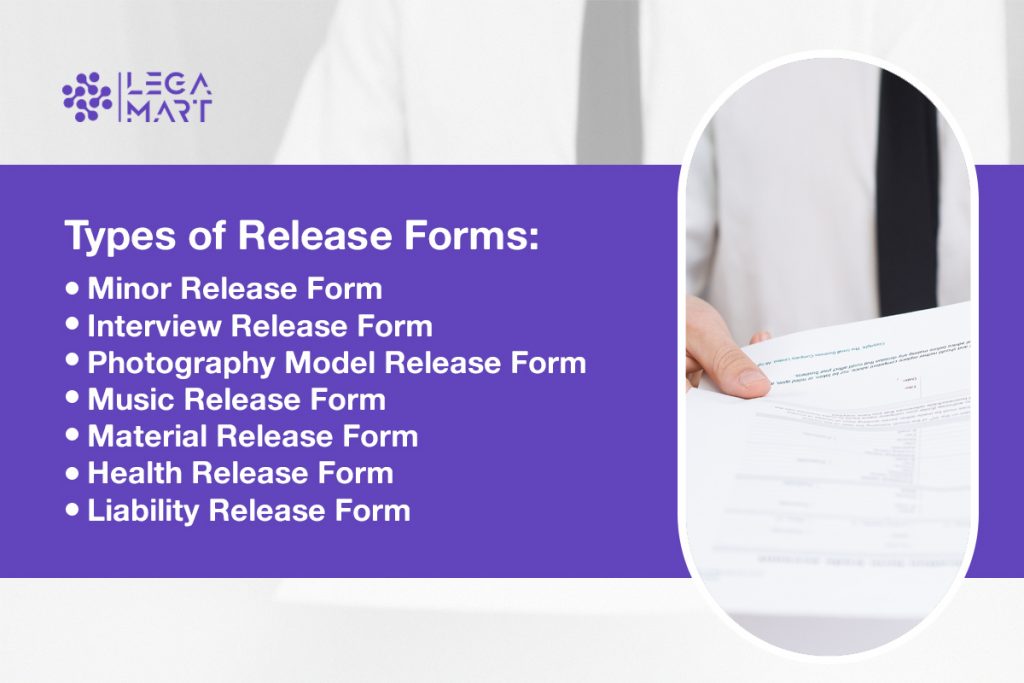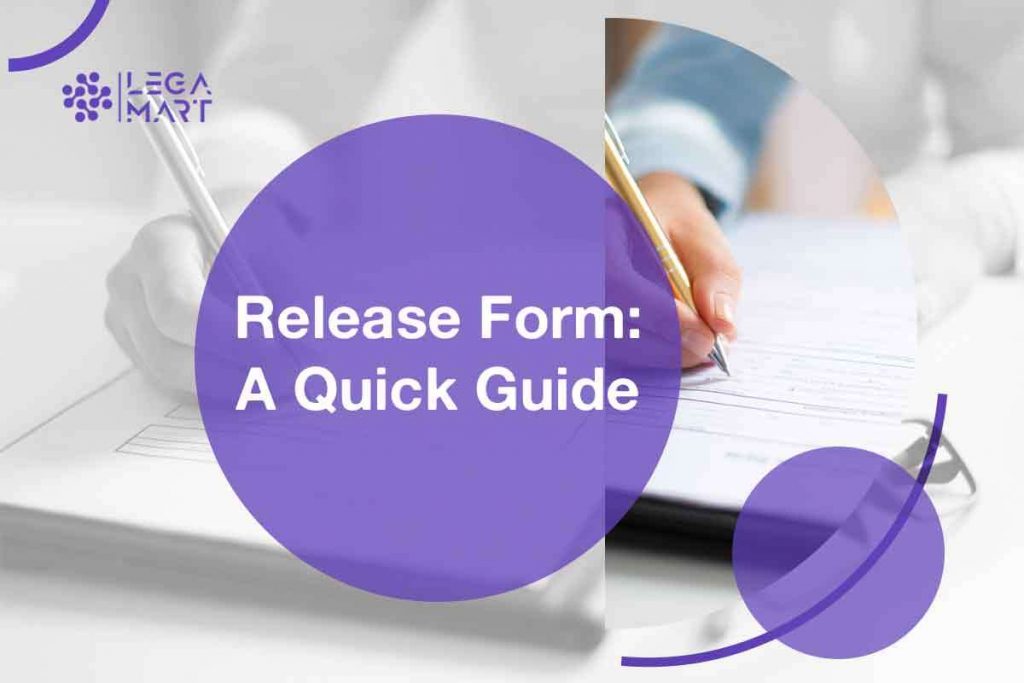Introduction
Have you ever found yourself in a situation where you needed to use someone’s image, video, or voice for a project but didn’t know if you had the legal right to do so?
If so, you’re not alone.
In today’s digital age, multimedia assets have become commonplace in various fields, such as marketing, advertising, film, and education. However, using someone’s likeness without consent can lead to legal troubles and potentially harm their reputation. That’s where a release form comes in handy.
A release form, also known as a waiver, is a legal document that grants permission for a person or organization to use someone else’s image, likeness, or property in a specific context. They are commonly used in various settings, including photography, video production, and events. In this article, we’ll explore what these are, what they’re used for, the types available, how to write one, the most important terms to include, and who needs one.
Release forms are important not only in the creative industries but also in fields such as journalism, medicine, and research, where obtaining consent for using someone’s likeness is crucial. So, whether you’re a filmmaker, photographer, journalist, or marketer, it’s vital to understand the importance of release forms and how to use them correctly. Don’t risk legal troubles or damage to your reputation – use release forms to protect yourself and your subjects.
What is a Release Form?
This legal agreement between two parties outlines the terms of using an individual’s image, likeness, or property. The form proves that the individual has consented to the material and releases the person or organization using it from any legal claims that might arise from its use. In essence, it is a way to protect both parties from potential legal disputes.
What is a Release Form Used For?

These are commonly used in a variety of settings, including:
Photography and Video Production
In photography and video production, these are used to obtain the consent of the individuals being photographed or filmed. This includes models, actors, and any other individuals who may appear in the final product. The form outlines the terms of the photo or video shoot, including the intended use of the material and any compensation that will be provided. In many cases, it is required by law, particularly when the material will be used commercially. This protects the rights of the individuals being photographed or filmed and ensures they have informed consent to use their likeness.
Events
Release forms are also used at public events, such as concerts and sporting events, to obtain the consent of attendees to be photographed or filmed. This is particularly important when the event is recorded for commercial purposes, such as in a television broadcast or online advertisement.
It will outline the terms of the filming or photography, including the intended use of the material and any compensation that will be provided to the attendee for their participation. By obtaining written consent through it, event organizers can avoid potential legal disputes with attendees who may object to their image being used in commercial contexts.
Property
Release forms are also used when an individual or organization wants to use someone else’s property, such as a location or artwork, in a specific context. This may include using a private residence or business as a film location or reproducing a work of art for advertising or promotion.
This agreement outlines the terms of the use of the property, including any compensation that will be provided to the property owner. By obtaining written consent through this release document, the individual or organization using the property can avoid potential legal disputes with the owner.
In all of these scenarios, it is used to protect the rights of the individuals and entities involved and to ensure that the terms of the usage are clear and understood by all parties.
Types of Release Forms

There are several versions or kinds of release agreements, each tailored to a specific context or use case. Some of the most common types are as follows:
General Release Form
This comprehensive agreement releases all potential claims and liabilities arising from a specific event or activity. It typically covers all parties involved and any potential damages or injuries.
Model Release Form
A model form is a legal document granting a photographer or filmmaker permission to use an individual’s image or likeness in photos or videos. This form is typically used in commercial photography or videography, where the images or footage will be used for commercial purposes.
Property Release Form
A property release agreement is a legal document that grants permission to a photographer or filmmaker to use images or footage of a specific property for commercial purposes. This form is commonly used in real estate photography or videography.
Location Release Form
This is a legal document that grants permission to a photographer or filmmaker to use images or footage of a specific location for commercial purposes. This form is commonly used in outdoor or landscape photography or videography.
Talent Release Form
A talent release form, also known as an actor release form, is a legal document granting a production company permission to use an individual’s performance, voice, or likeness in a film or video. This form is commonly used in the entertainment industry. It outlines the terms and conditions of using the actor’s likeness and typically includes compensation, credit, and publicity clauses.
Video Release Form
It is a legal document that grants permission to use video footage of an individual for a specific purpose, such as in a documentary, promotional video, or educational video.
Photo /Photography Release Form
This, also known as an image release form, is a legal document that grants permission to use a person’s likeness in a photograph or video. This is commonly used in commercial or promotional settings, for marketing materials, social media campaigns, or news articles. It outlines the terms and conditions of using the person’s image and typically includes compensation, credit, and publicity clauses. These may also include clauses related to the specific intended use of the image, such as limiting the use of the image to a particular time or geographic region.
Media Release Form
It is popularly known as a media consent form or a press release form, a legal document granting permission to use an individual’s name, image, and other personal information in various forms of media. It is commonly used in journalism, advertising, and public relations. The purpose here is to obtain the explicit consent of the individual to use their name, image, and other personal information for a specific purpose or in a specific context. This can include using their image in print or digital publications, websites or social media platforms, or audio or video recordings.
Minor Release Form

It is a legal document that grants permission from a parent or legal guardian to use the image or likeness of a minor in photos or videos. This form is typically used in commercial photography or videography.
Interview Release Form
This is a legal document granting permission to use an individual’s interview or testimonial in a film, documentary, podcast, or other media. This form is commonly used in journalism, documentary filmmaking, or marketing.
Video Production Form
A video production release form is a legal document that grants permission to use an individual’s image or likeness in a video production. This type of agreement is commonly used in films, television shows, and other types of video productions.
Photography Model Release Form
A photography model release form is a legal document that allows a photographer to use photos or videos of people for commercial purposes. It grants the photographer permission to use the model’s likeness, image, and voice and outlines the terms and conditions of use.
Music Release Form
This legal document grants permission to use a piece of music in a film, TV show, commercial, or other media. This form is commonly used in the music industry and helps to secure the rights to use copyrighted music.
Material Release Form
This legal document grants permission to use a particular material, such as artwork or music, in a specific context. It is commonly used in the entertainment industry, where producers and other professionals must secure permission from copyright owners to use their work in production. This form outlines the terms and conditions of the permission granted, including any restrictions or limitations on use.
Health Release Form
A health form is a legal document that grants permission to share an individual’s health information with specific parties, such as doctors, insurance companies, or family members. This form is commonly used in healthcare settings and helps to protect an individual’s privacy rights.
Liability Release Form
A liability form is a legal document that releases an individual or organization from liability in case of injury or damage that may occur during a specific activity or event. This form is commonly used in sports, recreation, or adventure activities, such as bungee jumping, skydiving, or rock climbing.
How Do You Write a Release Form?
When writing, it is essential to be specific and clear about the terms of the agreement. Here are the basic steps:
Identify the parties involved
The first step in writing is identifying all parties involved, including the releaser and the release.
Describe the activity or event
Specify the activity or event in detail, such as a photo shoot, a video production, or a performance.
State the terms of the release
Clearly specify what is being released, whether liability, claims, or damages.
Include a timeframe
Specify the duration of the release, such as the date and time of the event or the length of time the release is valid.
Signature and Date
The document should end with a signature and date line. The person signing the form should sign and date the document in the presence of a witness. This will help to ensure that the signature is valid and legally binding.
Witness Signature
A witness should sign the form to verify that the person signing the form did so voluntarily and with full knowledge of its contents. The witness should also print their name and contact information, address, and phone number.
Most Important Terms in Release Form
Releasee
The release is the person or entity being released from liability or claims. The releasee is typically identified by name and described in detail. The release can be an individual or an organization, such as a business or a government agency.
Releaser
The releaser is the person or entity releasing the claims or liability. The releaser can be an individual or an organization. Here, the releaser is typically identified by name and described in detail.
Consideration
Consideration refers to payment or other benefits provided to the releaser in exchange for signing the form. Consideration can take many forms, including cash, goods or services, or other types of compensation.
Indemnification
Indemnification is a clause that protects the release from any future claims or lawsuits related to the activity or event. This means that the release is not liable for any damages or losses that may occur due to the activity or event, even if the releaser causes those damages or losses.
Jurisdiction
Jurisdiction is where any legal disputes related to the agreement will be handled. This can include a specific court or jurisdiction or be left open to interpretation.
Waiver
A waiver is a voluntary relinquishment or abandonment of a legal right or privilege. In the context of the form, a waiver may be used to waive certain rights or claims that the releaser may have against the release.
Assumption of Risk
Assumption of risk refers to accepting the possibility of injury or loss inherent in a particular activity or event. In this context, the releaser may be asked to acknowledge and assume the risks associated with the activity or event.
Confidentiality
Confidentiality requires that certain information or documents be kept confidential and not shared with others. Here, confidentiality clauses may be used to protect the releasee’s proprietary information or trade secrets.
Consent to Use Image or Likeness
The person granting permission should clearly state that they consent to using their image or likeness in the specific context outlined in the form.
Rights Granted
The form should specify the rights granted to the person or organization using the material. This might include the right to reproduce, display, distribute, or modify the material.
Limitations on Use
It should also specify any limitations on using the material. For example, it might state that the material can only be used for a specific purpose or that it cannot be used in a particular context.
Severability
Severability refers to the ability of individual clauses in a contract to be enforced or invalidated without affecting the validity of the entire agreement. This means that if one clause in the form is unenforceable, the rest may still be valid and enforceable.
Governing Law
Governing law refers to the laws and regulations that apply to the legal document. This can include state, federal, or international laws, depending on the nature of the release and the parties involved. The governing law clause specifies which laws will apply in the event of a legal dispute.
Who Needs a Release Form?
Any individual or organization that engages in activities or events that could result in potential liability or claims needs this. Some examples of situations that require may include:
Photography and videography projects
Anyone using images or footage of other people in promotional or commercial contexts needs to obtain it for the model.
Events with physical activity
Sports events, fitness classes, and outdoor adventures that involve physical activity require participants to sign a liability form.
Private property access
People who need to access private property, such as film crews or contractors, need to obtain a location form.
Performances and recordings
Musicians, actors, and other performers need to sign a talent form to allow their performances or recordings to be used for commercial or promotional purposes.
Anyone who intends to use someone else’s image, likeness, or property in a specific context should obtain a form. This includes photographers, filmmakers, event organizers, and anyone planning to use the material commercially.
In some cases, these are required by law. For example, in the United States, the Children’s Online Privacy Protection Act (COPPA) requires parental consent before collecting personal information from children under 13. In these cases, a release form is necessary to comply with legal requirements.
Conclusion
In conclusion, these are critical legal tools used in various industries to protect the rights and interests of all parties involved in using creative materials. From photography and video production to events and property usage, these ensure that individuals and organizations obtain written consent for using images, likenesses, and property.
When writing a form, it is important to include the most important terms, such as consent to use the material, limitations on use, compensation, and a waiver of liability. Anyone intending to use someone else’s image, likeness, or property in a specific context should obtain it; in some cases, they are required by law.
While the language and legal requirements can vary greatly depending on the jurisdiction and industry, their importance in protecting against legal disputes and ethical concerns remains constant. As such, it is essential that individuals and organizations carefully review and tailor these forms to their specific needs, ensuring that they are using creative materials responsibly and ethically.
In today’s rapidly evolving legal landscape, these are a vital component of modern legal practice and are essential for protecting the rights and interests of all parties involved in using creative materials. At LegaMart, we understand the importance of having a legally binding contract. That’s why we offer a directory of legal professionals who can help you create a customized release form that meets your needs. We also offer free legal advice and affordable legal services from 100+ countries. To learn more about how LegaMart can help you with your legal needs, visit our homepage and explore our directory and blogs.




